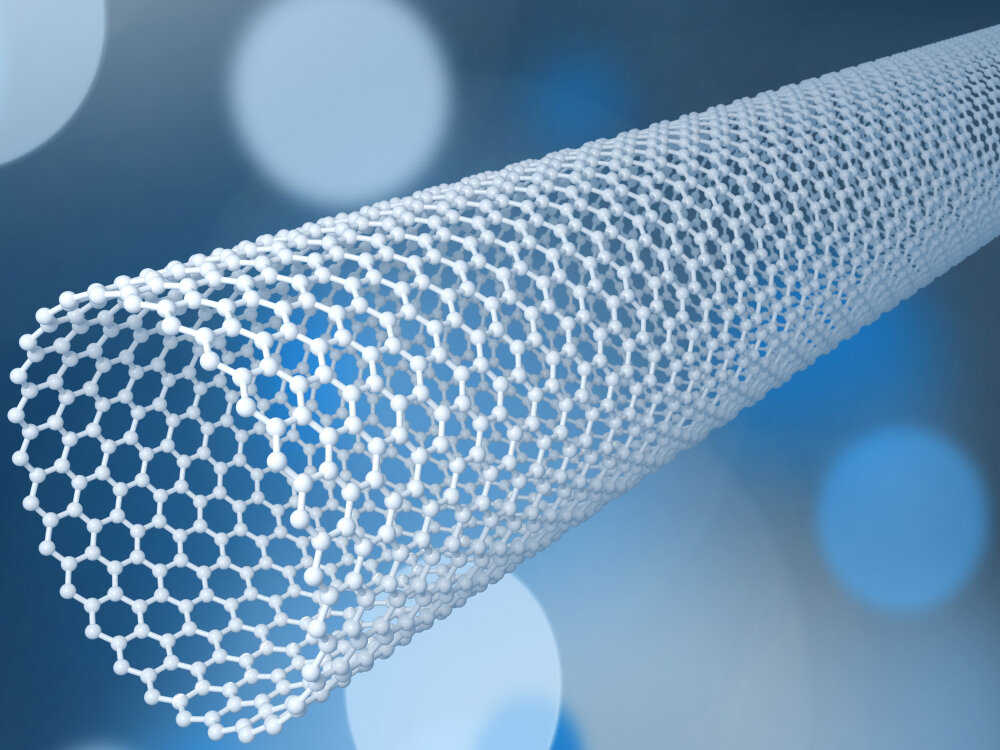New Uses for Nanotubes in Manufacturing

In recent years, the demand for innovative materials in various industries has grown significantly. One of the most promising advancements has been the development of nanomaterials, which offer unique properties and functionalities.
Among these, single-walled carbon nanotubes (SWCNTs) have gained attention due to their versatility and scalability for industrial applications. The need for more efficient and effective sensors in manufacturing and material monitoring has driven research teams to explore the potential of SWCNTs. In a recent article, a research team presented their findings on how these nanotubes can be utilised as practical and scalable solutions for sensor technology in polymer production.
The study, published in Carbon Journal, includes contributions from researchers at Skoltech’s Laboratory of Nanomaterials and Skoltech Photonics in collaboration with Jiangsu University and Belarussian State University. The work highlights a breakthrough in the integration of SWCNTs into industrial processes, demonstrating their effectiveness as sensors capable of monitoring polymer properties throughout their lifecycle.
Professor Albert Nasibulin, head of the Laboratory of Nanomaterials at Skoltech Photonics, explained the significance of this achievement. "The work aligns with our laboratory's strategy of scaling nanomaterials for industrial applications. With single-walled carbon nanotubes used as sensors, we are able to help detect and manipulate polymer production variables as needed, as well as understand how the material is behaving when applied practically." His remarks underscore the potential impact of this technology on the manufacturing industry, where precise monitoring and control of material properties are essential for ensuring high-quality outcomes.
Nasibulin also emphasised the laboratory’s unique position in the field, stating, "Here, in one of the most influential carbon nanotube labs in Russia and the only one in Skoltech working on carbon nanotube synthesis and application, our motivation to bring such technologies to market is very strong." This strong commitment to bringing nanotechnology to industrial use reflects the broader trend of translating academic research into commercial products that can address real-world challenges.
The team's study illustrates a concept that, while straightforward in theory, is challenging to implement—utilising a single sensor to continuously monitor a polymer's properties throughout its production and application. This approach allows for real-time adjustments to the manufacturing process and offers insights into how the polymer behaves during its use. However, integrating these sensors without compromising the host material’s properties or the sensor’s sensitivity has proven difficult. The researchers have successfully navigated these obstacles, revealing new mechanisms of action that enhance the performance of the sensors without degrading the materials they are embedded in.
Research scientist Hassaan Ahmad Butt, a co-author of the study from the Laboratory of Nanomaterials at Skoltech Photonics, elaborated on the breakthrough. "We've managed to really show the flexibility of our single-walled carbon nanotubes in this work. We can integrate them during the manufacturing of large polymer parts, and they also cause no loss in material properties." This flexibility is key to the widespread application of SWCNTs, as their ability to maintain the integrity of the materials they monitor is crucial for their adoption in industrial settings.
Butt further explained the team’s ability to fine-tune the sensors for specific applications, noting that "we identified optimised parameters for their operation, and by changing something as simple as thickness, we can fine tune their sensitivity and applications. They can be applied on or in polymers, meaning that already produced profiles can be monitored by simply placing the sensors on the material surface." This adaptability not only broadens the range of potential uses for SWCNT sensors but also offers a straightforward method for retrofitting existing products with advanced monitoring capabilities.
The international collaboration that made this research possible is another highlight of the study. According to Dmitry Krasnikov, an assistant professor at Skoltech Photonics and a co-author of the study, "This joint work was brought to life as part of the long-term and very productive cooperation with our international partners. We hope to continue cooperation and develop bilateral ties, which will allow us to achieve a synergistic effect in our field of research." This statement underscores the importance of global partnerships in advancing cutting-edge technologies, particularly in fields as complex and rapidly evolving as nanomaterials.
The Laboratory of Nanomaterials at Skoltech is involved in numerous projects focused on nanomaterials, including the development of multifunctional coatings, mechanically enhanced nanocomposites, and ultra-sensitive sensors. Their work with SWCNTs demonstrates the vast potential of these materials to revolutionise industries by improving the efficiency and effectiveness of manufacturing processes, particularly through the integration of advanced sensor technologies.
As the demand for smarter, more adaptable materials continues to grow, the work of this research team offers a glimpse into the future of manufacturing and material science. The successful application of single-walled carbon nanotubes as sensors not only marks a significant step forward in nanotechnology but also opens the door to further innovations that could transform a range of industries. Through continued collaboration and research, the potential for SWCNTs to enhance industrial processes seems limitless, with real-world applications already beginning to take shape.
Author:
Arnold Kristoff
Content Producer and Writer





